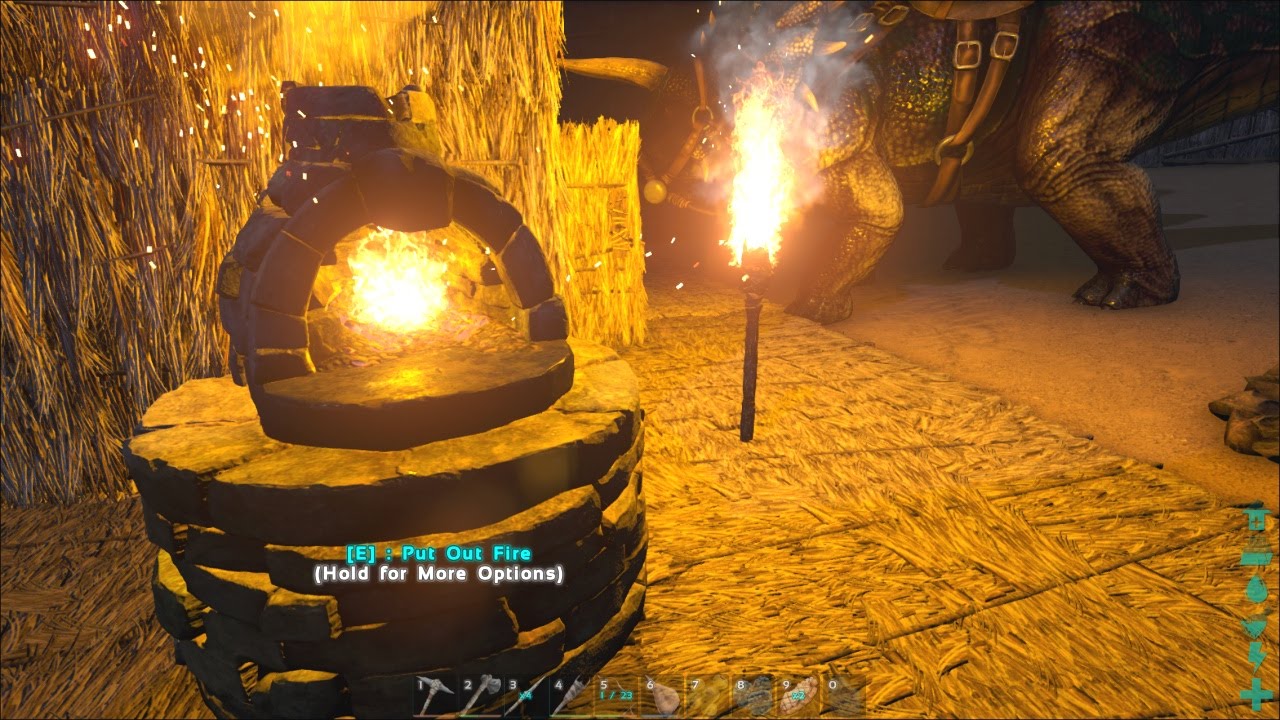Ark: Survival Evolved - How to Get Processed Resources
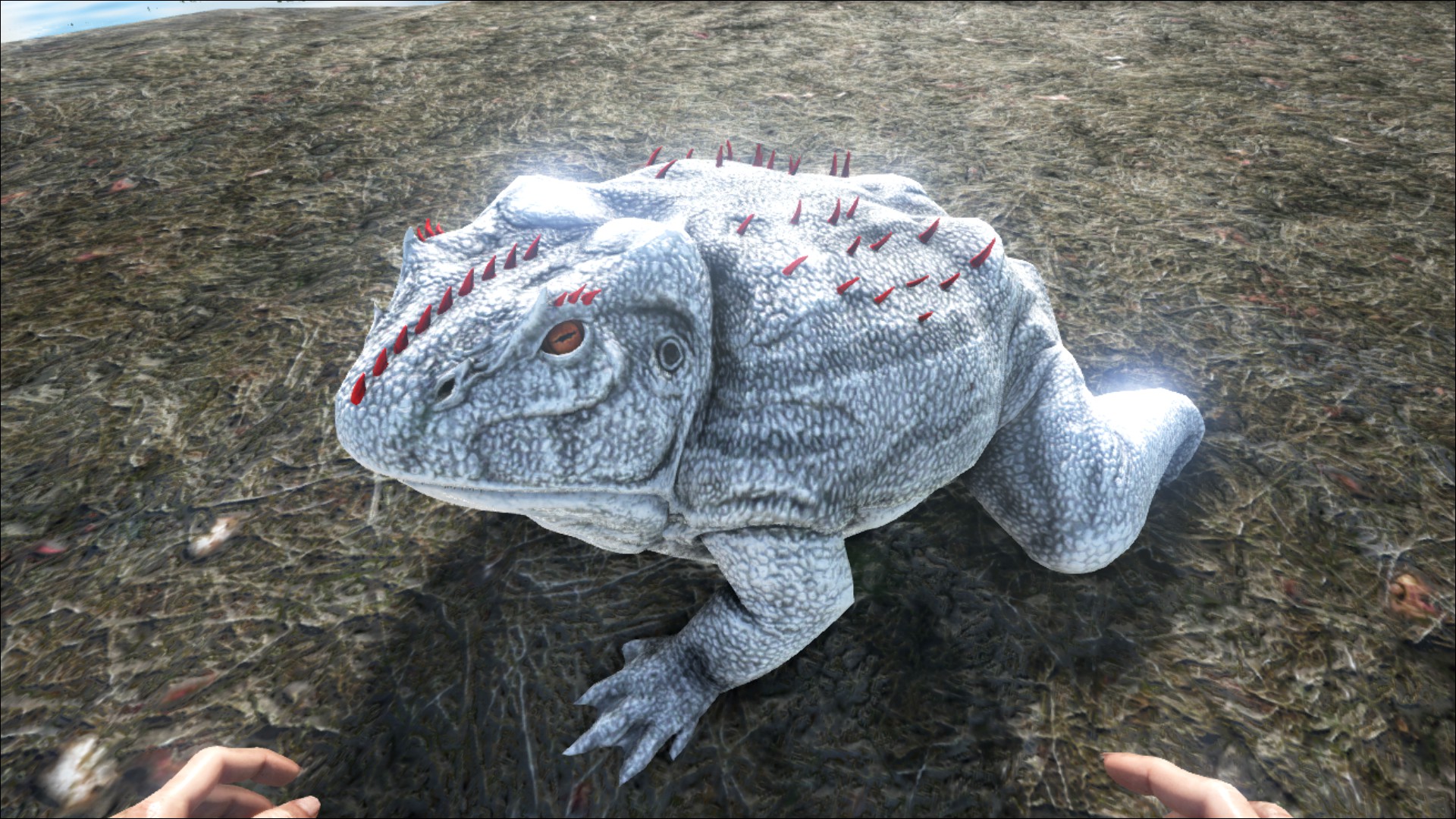
While the game is available on Play Store, it does not work on BlueStacks at this time. Please check this space for updates.
In a previous guide, we made a list of the most common raw resources in Ark: Survival Evolved so that you know where to look regardless of what you need in the game. Now that you know where to find your basic materials, it’s time to learn how to best use them in order to further your playthrough.
To obtain most of the items mentioned below, you have to use a crafting station and several raw materials. If you’re not yet familiar with the ins and outs of crafting, we recommend that you take a look at this list of tips and tricks before you start mass-producing.
The more you play, the bigger your base will become, and the more resources (of all types) you will need. That’s why it’s a good idea to be as efficient as possible with your materials and the guide below will help you do just that.
1. Metal Ingot
Produced in the Refining Forge, this resource is fairly common in Ark: SE, but also very frequently used. In other words, you’ll need a ton of it. To make a metal ingot, you have to use two metal ore, as well as some kind of fuel for the forge. You can use thatch, wood, or sparkpowder as fuel, but wood is often recommended here because it creates byproducts of its own (charcoal, for example) simply from being used in the forge.
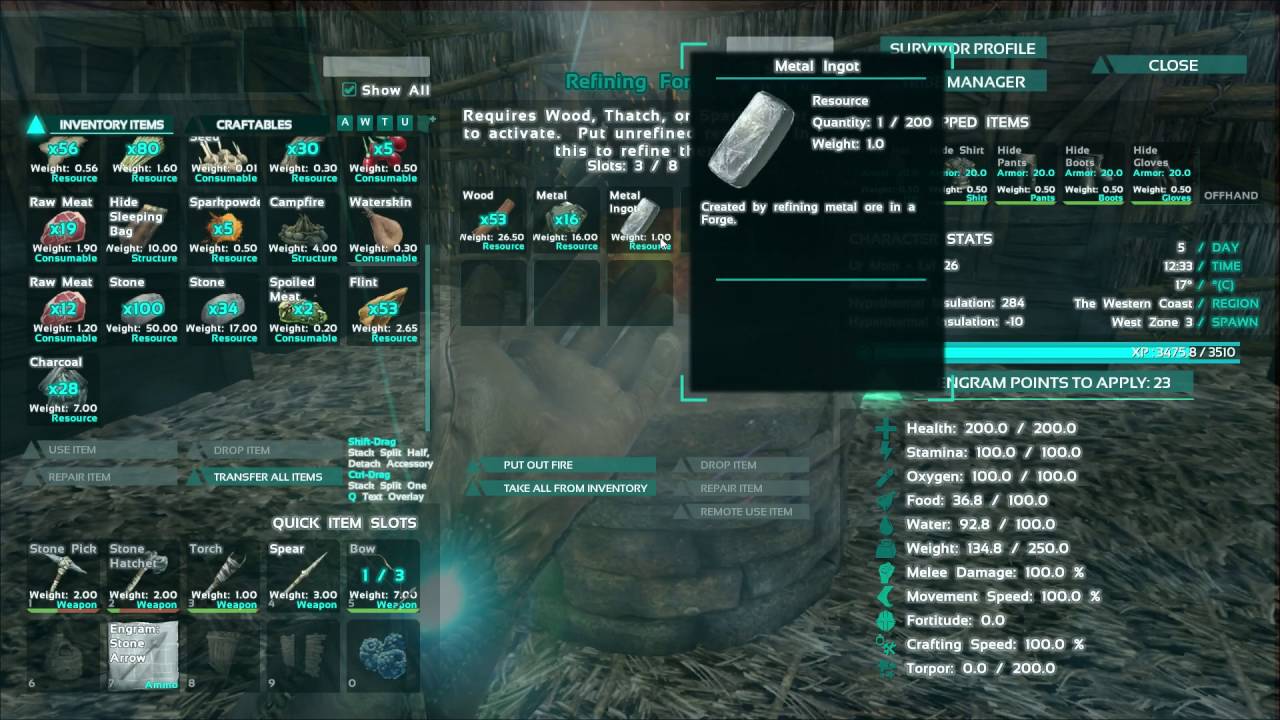
2. Clay
If you’re playing on Scorched Earth, you will need clay for almost all of your building projects. To obtain this resource in large quantities, you need a lot of cactus sap and sand. You can mix them both in the Mortar & Pestle and the Chemistry Bench, but the latter is far more efficient and can process a larger quantity of clay at a time.
3. Cementing Paste
This resource is also used primarily in construction, but in order to make it, you need chitin and stone in large quantities. Stone is very easy to obtain by farming rocks with the right dino, but chitin is less frequent. The best way to go about it is to farm Trilobites and throw all the chitin you get into the Mortar & Pestle. Alternatively, the Beezlebufo can generate small amounts of cementing paste when eating insects, but this method is rather slow.

4. Polymer
Obtained by combining cementing paste and obsidian in the Fabricator, polymer can take some time to produce in large quantities. You’ll have to kill tons of Trilobites and travel to dangerous mountains for obsidian, but it’ll be worth it in the end when you can use this resource to make wonderful soap and other advanced materials.
5. Cooked Meat
Raw meat is not the most appealing food, but more importantly, it last significantly less than cooked meat. To obtain cooked meat, you have to use either the Campfire or the Industrial Grill. Once this is done, you can further preserve the lifespan of the food by turning it into Jerky (with the help of the Preserving Bin) or storing it in a fridge.
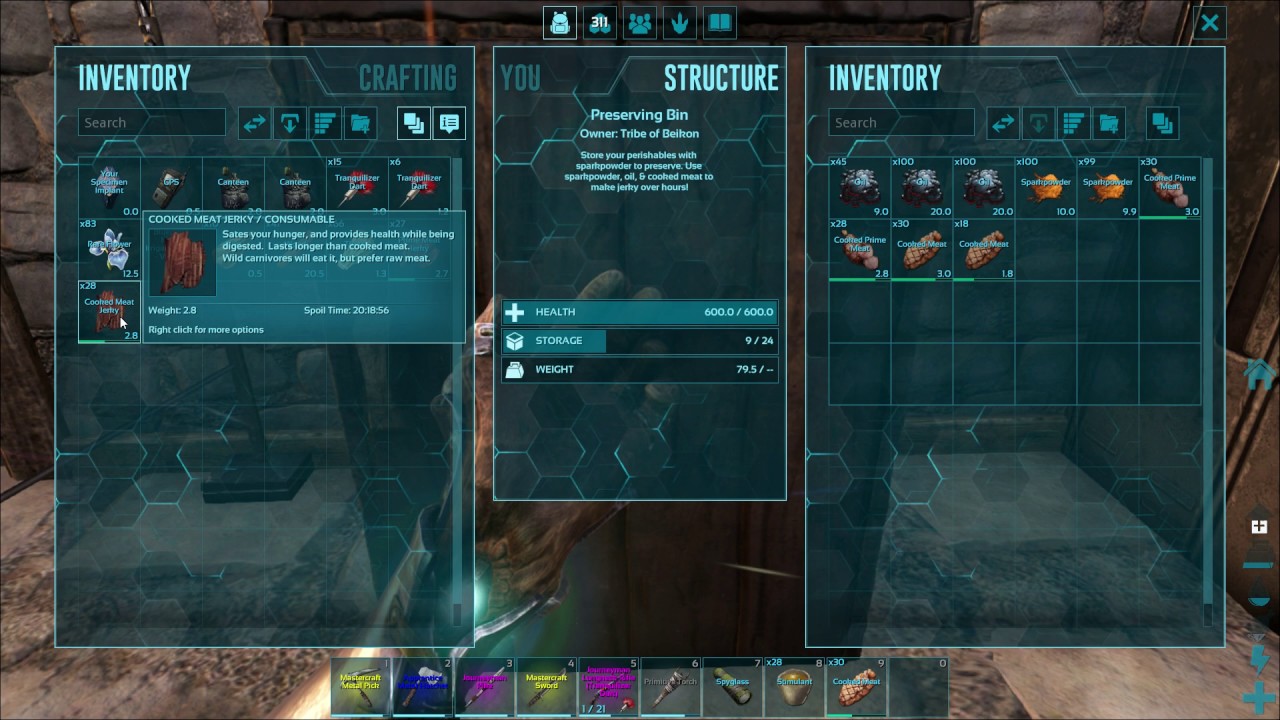
6. Cooked Fish Meat
This type of meat works in the exact same way as regular meat, although you cannot turn it into Jerky by using the Preserving Bin. Fish meat tends to last longer than regular meat, but you get less value from eating it overall.
7. Meat Jerky
Using cooked meat, oil, and sparkpowder as fuel, you can obtain meat jerky at the Preserving Bin. If you keep the jerky inside the bin, this can extend its lifespan even longer.
8. Preserving Salts
This resource is something you always want to carry with you because it can help you extend the lifespan of most perishable items. In Scorched Earth, you can obtain preserving salts by mixing large amounts of sulfur and raw salt in the Mortar & Pestle or the Chemistry Bench.
9. Spoiled Meat
You might think that spoiled meat is useless, but not in this game. You need it to make narcotics, some recipes, and even explosives or ammo. Spoiled meat is very easy to obtain: you just have to keep regular meat in your inventory long enough. To make it in industrial quantities, though, you’ll want to split any stacked meat into individual stacks of one. This way, all of the meat will become spoiled at the same time, which can save you hours.
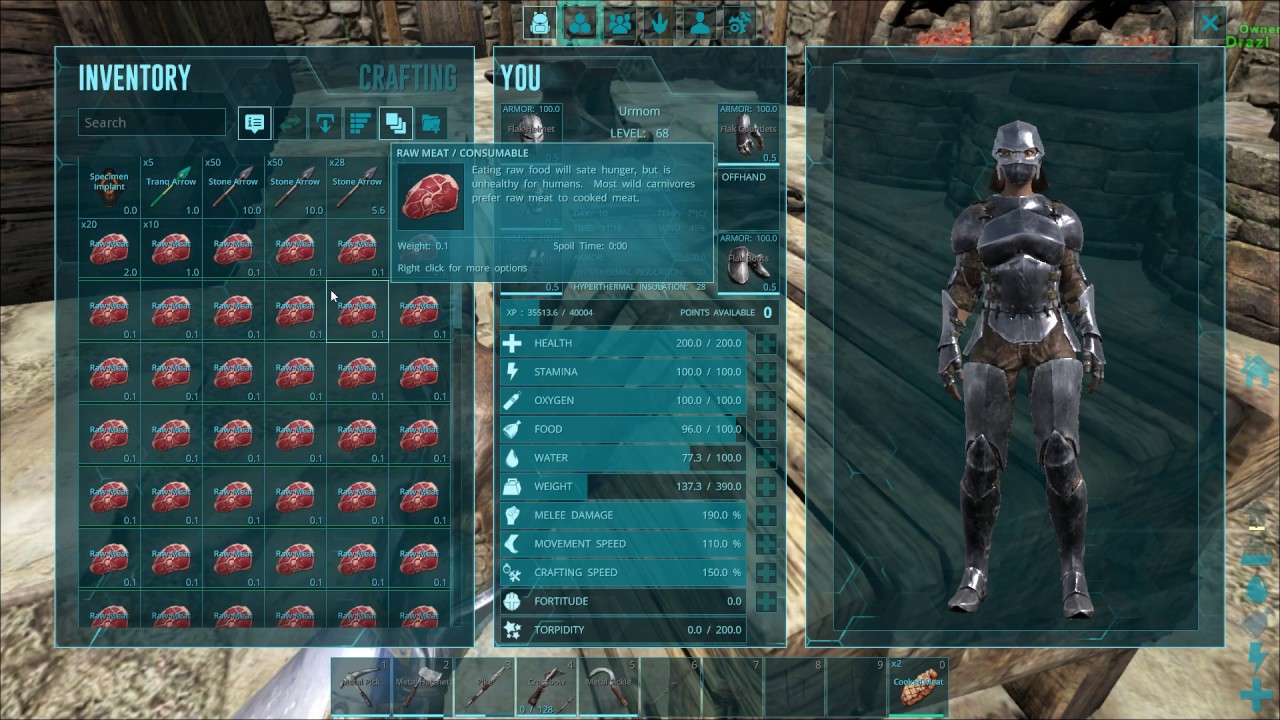
10. Charcoal
You can get this resource simply by burning wood, but if you want it in large quantities, you’ll have to use several campfires or a Refining Forge. Once you start making metal ingots, you’ll be burning a lot of wood and you should have more than enough charcoal.
11. Gasoline
Obtained by mixing large amounts of hides and oil in the Refining Forge, this resource is essential for many of the advanced crafting stations.
12. Gunpowder
You need gunpowder in abundance in order to make ammo and explosives, but thankfully, it’s not that hard to get. You just have to throw equal parts of charcoal and sparkpowder into either a Mortar & Pestle or a Chemistry Bench.
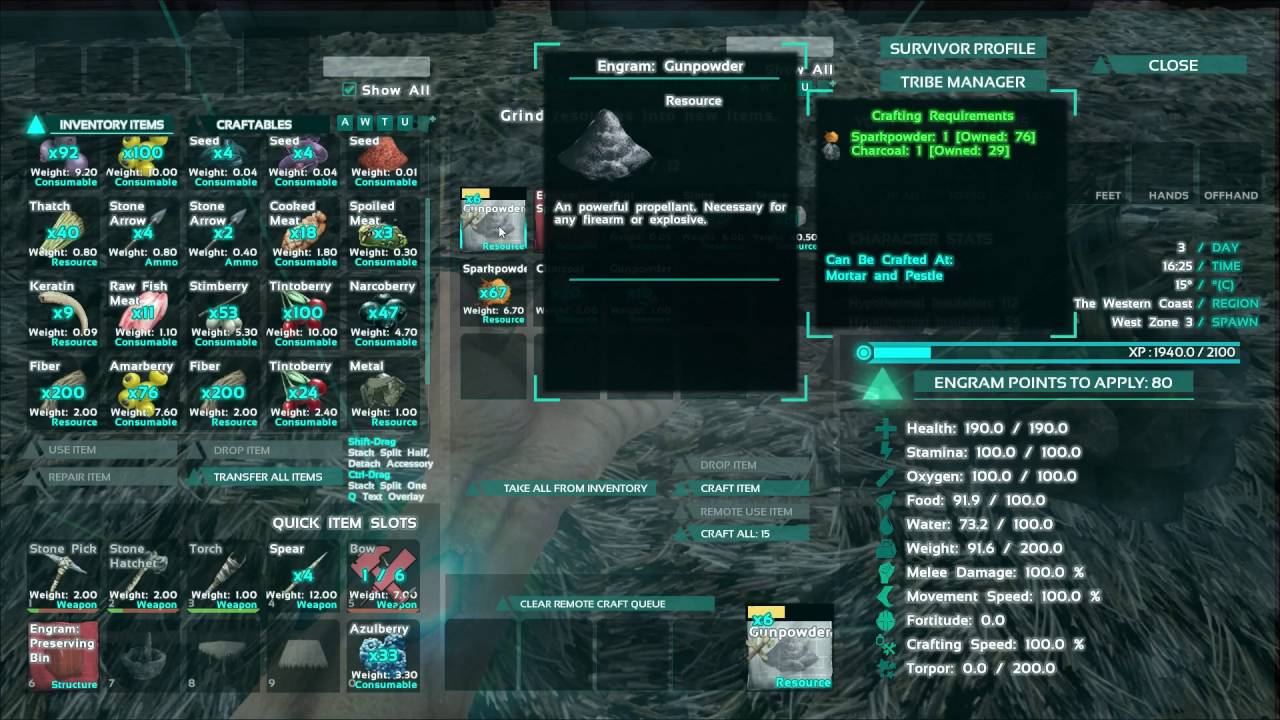
13. Sparkpowder
This resource is used in bulk, but it’s even easier to obtain than gunpowder. You need stone, flint, and one or several Mortar & Pestles, and that’s it! You can get plenty of stone and flint by farming large rocks with a suitable dino.
14. Propellant
Produced at the Chemistry Bench, propellant is a resource you can only make in Scorched Earth. It also requires fairly rare ingredients, including cactus sap, sulfur, and oil.
15. Stimulant
To make stimulant, you’ll want to set up a farm for a steady supply of stimberries. Then, you throw the stimberries and sparkpowder in a Mortar & Pestle to start the production. Once the stimulant is ready, you can use it to counter narcotics or tranquilizers.
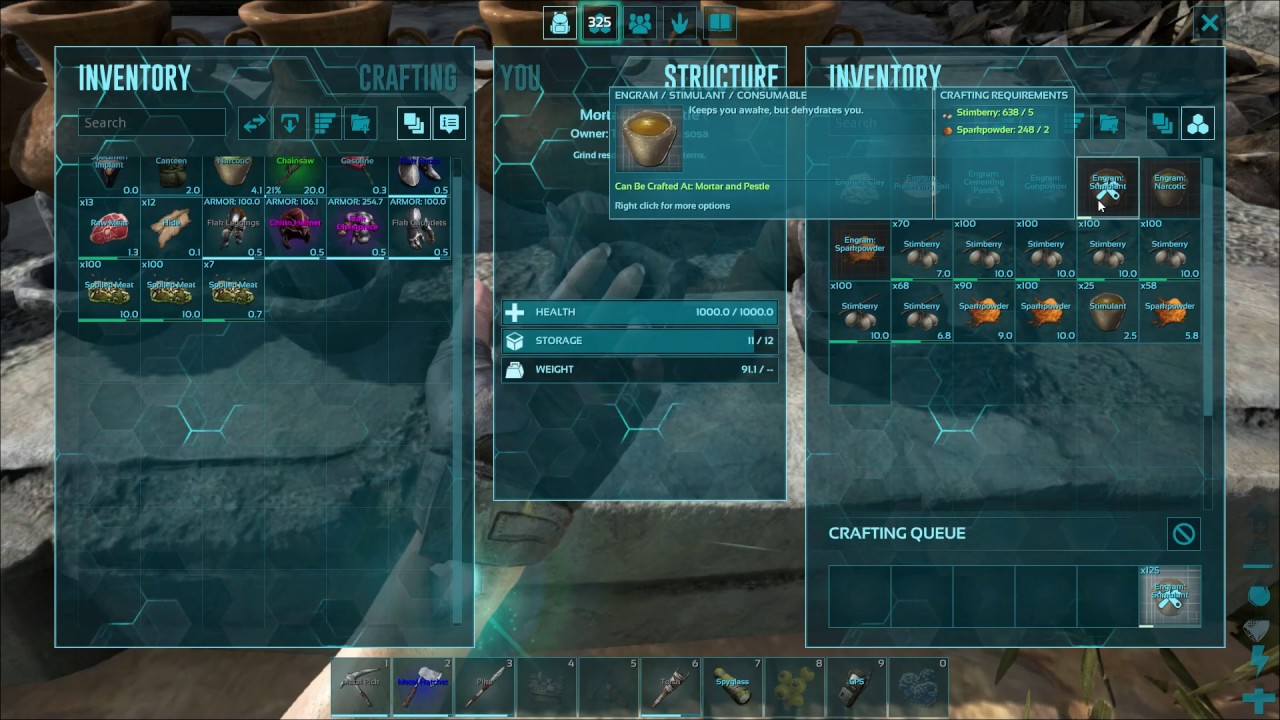
16. Narcotics
Used to tame dinos and to create ammo/explosives, narcotics are obtained by mixing spoiled meat with narcoberries & seeds in the Mortar & Pestle. To speed up production, either use a Chemistry Bench or set up multiple stations.
17. Electronics
Produced in the Fabricator, Electronics require metal and silica pearls. While metal is easy enough to get, you might have a harder time collecting the pearls. Still, you can find them in relatively shallow waters, so making Electronics doesn’t have to be as much of a pain as it seems initially.
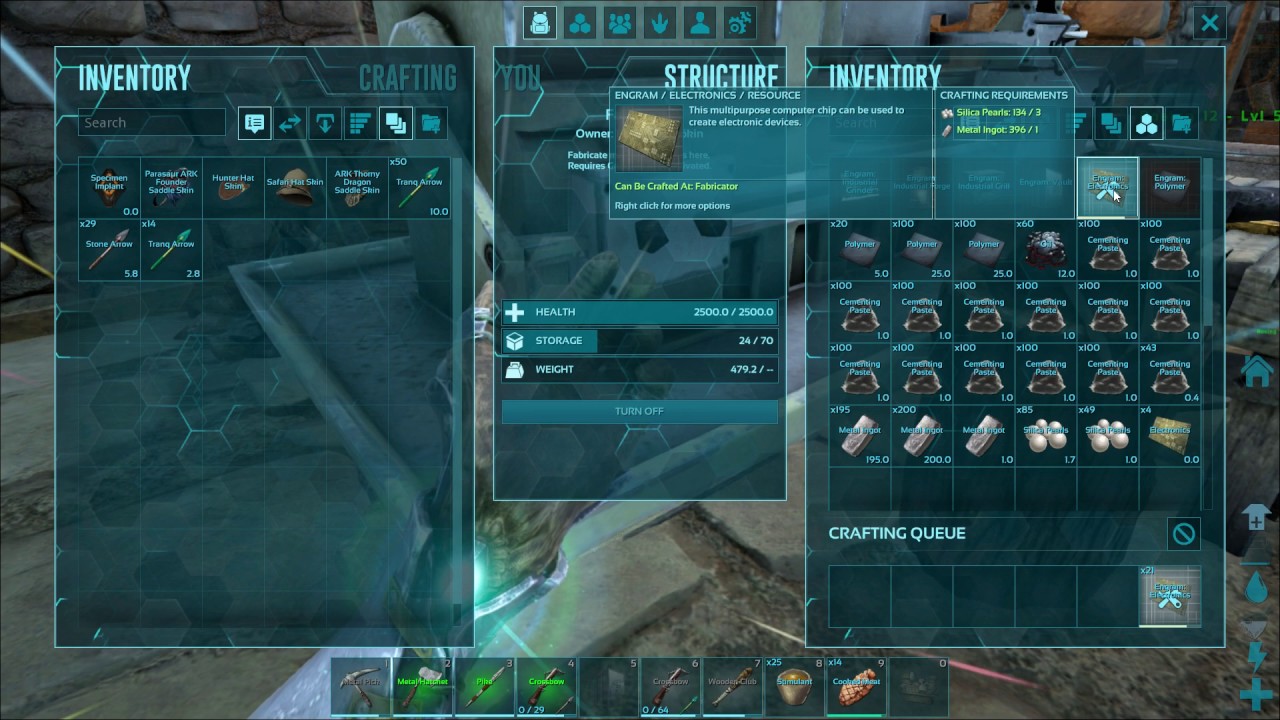
Whether you’re stocking on military supplies, making better tools, or rehauling your base, you now know how to get the ingredients that you need to get the job done quickly. Happy production to you!


